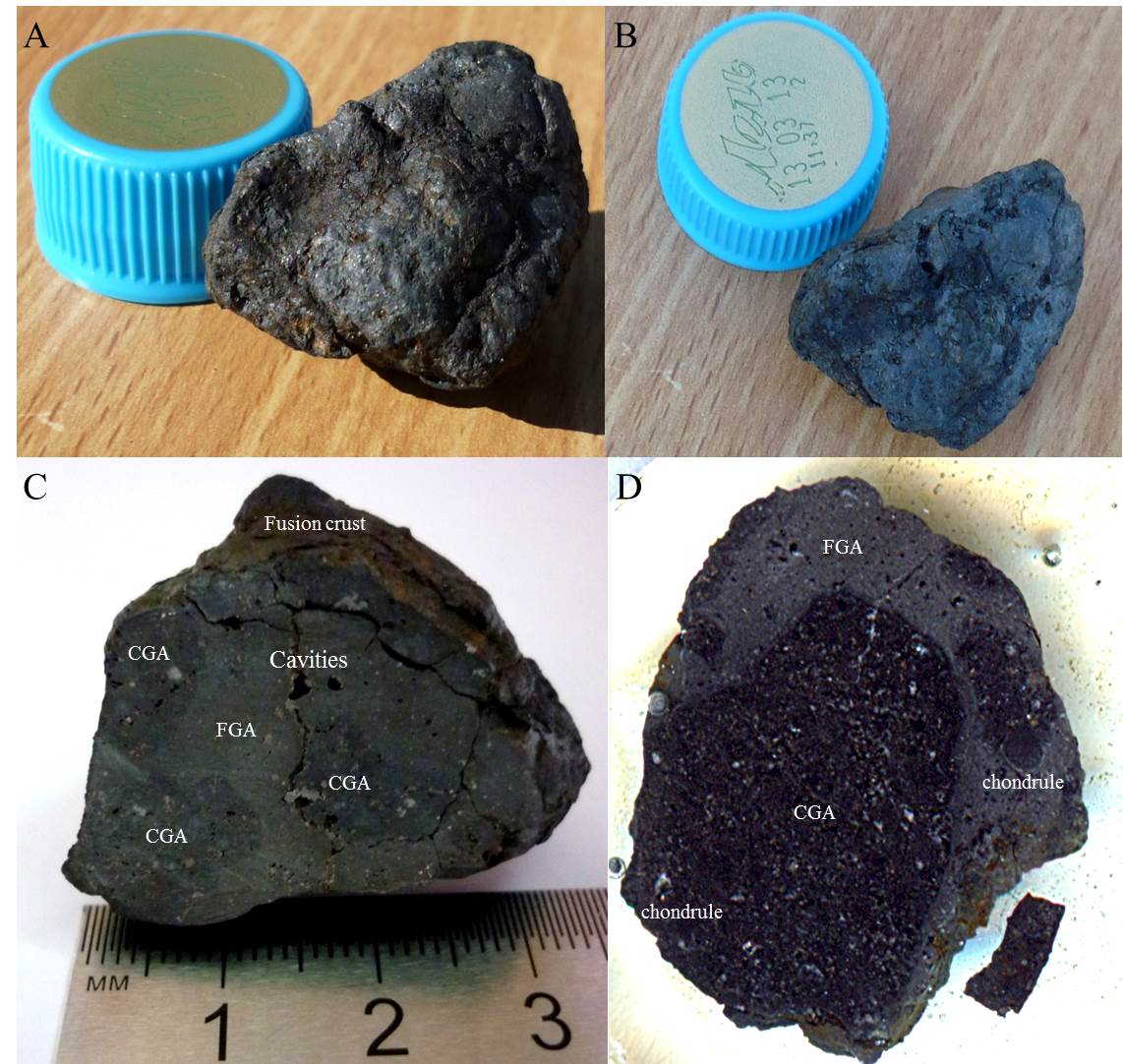Meteorites from Russian Meteor Explosion Reveal Signs of Cosmic Crashes

Meteorites that fell to Earth when a fireball exploded over Russia earlier this year show evidence of earlier cosmic collisions, a new study reveals.
Some fragments of the Russian meteor explosion over the city of Chelyabinsk on Feb. 15 — which injured more than 1,000 people — revealed melting and crushing that came from older impacts. The darkest black bits of the fragments showed traces of "high pressure loads sufficient to entirely crush the mineral grains and melt metallic material," the scientists said in a statement.
"These dark meteorites are exciting rocks to study," Tomas Kohout, a physicist at the University of Helsinki, said in a statement. "Their spectrum and composition is masked by ancient space collisions. There are many dark asteroids with featureless spectra in our solar system. Some people think that they may be formed of rocks rich in carbon and organic matter. But they can be also made of shock-darkened ordinary chondrites similar to the dark Chelyabinsk meteorites." [Meteor Streaks Over Russia, Explodes (Photos)]
The meteorite bits were a mélange of different types of silicate-rich ordinary chondrites, which are the stony meteorites that fall the most often on Earth. They ranged from light grey, showing very little evidence of space collisions, to dark black, where melted iron poured into the cracks that exist in silicate mineral grains.
Under the microscope, the grayest meteorite fragments contained minerals such as pyroxene and olivine, researchers said. The black ones had "dark, featureless spectra" because the molten iron smudged the silicates' composition.
The difficulty of identifying the darkest bits of meteorite may shed light on why it's hard to predict the composition of dark asteroids from afar, the researchers said. They added that it would be easier to send spacecraft to get a close-up view since the asteroids' spectra would be difficult to read from a distance.
"The results are of special interest because they not only shed light on potentially hazardous impacts of asteroids on Earth, but also on more violent space collisions which disrupted ancient protoplanets in the early solar system into smaller asteroids we observe today," the scientists wrote in a statement.
Breaking space news, the latest updates on rocket launches, skywatching events and more!
Results were presented today (Oct. 8) at the annual meeting of the Division for Planetary Sciences of the American Astronomical Society in Denver, Colo.
Earlier this year, another science team said the melting they observed in meteorite fragments could have come from two possibilities: an earlier crash with an asteroid within the solar system, or melting from when Chelyabinsk's meteorite grazed the sun's sphere of influence.
Follow Elizabeth Howell @howellspace, or SPACE.com @Spacedotcom. We're also on Facebook and Google+. Original article on SPACE.com.

Elizabeth Howell (she/her), Ph.D., was a staff writer in the spaceflight channel between 2022 and 2024 specializing in Canadian space news. She was contributing writer for Space.com for 10 years from 2012 to 2024. Elizabeth's reporting includes multiple exclusives with the White House, leading world coverage about a lost-and-found space tomato on the International Space Station, witnessing five human spaceflight launches on two continents, flying parabolic, working inside a spacesuit, and participating in a simulated Mars mission. Her latest book, "Why Am I Taller?" (ECW Press, 2022) is co-written with astronaut Dave Williams.
